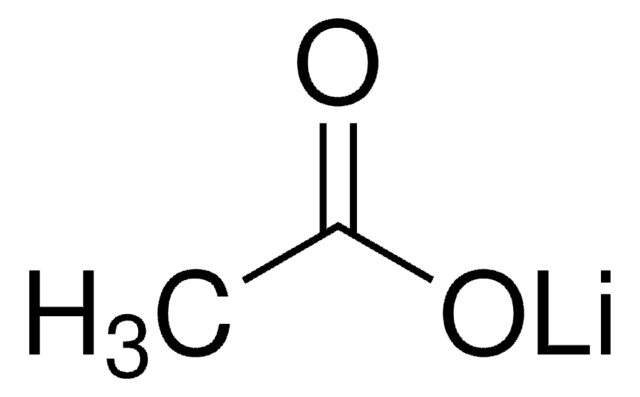Kluczowe dokumenty
202444
Poly(ethylene glycol)
average MN 3,350, hydroxyl, powder
Synonim(y):
Polyethylene glycol, PEG
About This Item
Polecane produkty
product name
Poly(ethylene glycol), average Mn 3,350, powder
Postać
powder
Poziom jakości
masa cząsteczkowa
average Mn 3,350
pH
4.5-7.5
lepkość
90 cSt(210 °F) (99 °C)(lit.)
mp
54-58 °C (lit.)
gęstość
1.204 g/mL at 25 °C
Ω-koniec
hydroxyl
α-koniec
hydroxyl
ciąg SMILES
C(CO)O
InChI
1S/C2H6O2/c3-1-2-4/h3-4H,1-2H2
Klucz InChI
LYCAIKOWRPUZTN-UHFFFAOYSA-N
Szukasz podobnych produktów? Odwiedź Przewodnik dotyczący porównywania produktów
Powiązane kategorie
Opis ogólny
Zastosowanie
It can be used to modify the surface of photocatalytic TiO2 nanopowder for its application in self-cleaning paints. PEG-coated TiO2 nanopowder can be prepared under mild conditions and show excellent colloidal stability.
It can be used as a cross-linker to prepare poly(N-isopropylacrylamide) based thermosensitive injectable hydrogels. The addition of PEG improves the chemical and mechanical properties of hydrogel and prevents it from dissolving in the swelling medium. Owing to their biocompatibility and biodegradability, these hydrogels are widely used for biomedical applications.
Cechy i korzyści
- High structural flexibility
- Biocompatibility
- High hydration capacity
- Devoid of any steric hindrance
Inne uwagi
produkt powiązany
Kod klasy składowania
11 - Combustible Solids
Klasa zagrożenia wodnego (WGK)
WGK 1
Temperatura zapłonu (°F)
Not applicable
Temperatura zapłonu (°C)
Not applicable
Środki ochrony indywidualnej
Eyeshields, Gloves, type N95 (US)
Wybierz jedną z najnowszych wersji:
Masz już ten produkt?
Dokumenty związane z niedawno zakupionymi produktami zostały zamieszczone w Bibliotece dokumentów.
Klienci oglądali również te produkty
Produkty
Progress in biotechnology fields such as tissue engineering and drug delivery is accompanied by an increasing demand for diverse functional biomaterials. One class of biomaterials that has been the subject of intense research interest is hydrogels, because they closely mimic the natural environment of cells, both chemically and physically and therefore can be used as support to grow cells. This article specifically discusses poly(ethylene glycol) (PEG) hydrogels, which are good for biological applications because they do not generally elicit an immune response. PEGs offer a readily available, easy to modify polymer for widespread use in hydrogel fabrication, including 2D and 3D scaffold for tissue culture. The degradable linkages also enable a variety of applications for release of therapeutic agents.
Devising biomaterial scaffolds that are capable of recapitulating critical aspects of the complex extracellular nature of living tissues in a threedimensional (3D) fashion is a challenging requirement in the field of tissue engineering and regenerative medicine.
Powiązane treści
Glikol polietylenowy (PEG), czasami określany również jako tlenek polietylenu (PEO), jest polimerem kondensacyjnym tlenku etylenu i wody, który ma kilka właściwości chemicznych, które czynią go użytecznym w zastosowaniach biologicznych, chemicznych i farmaceutycznych.
Nasz zespół naukowców ma doświadczenie we wszystkich obszarach badań, w tym w naukach przyrodniczych, materiałoznawstwie, syntezie chemicznej, chromatografii, analityce i wielu innych dziedzinach.
Skontaktuj się z zespołem ds. pomocy technicznej

